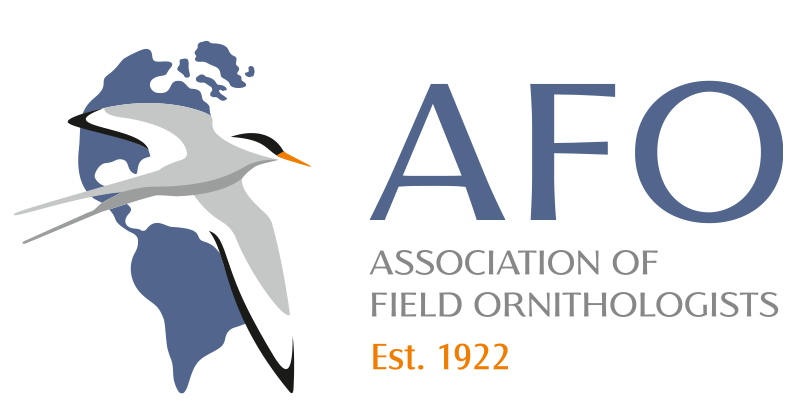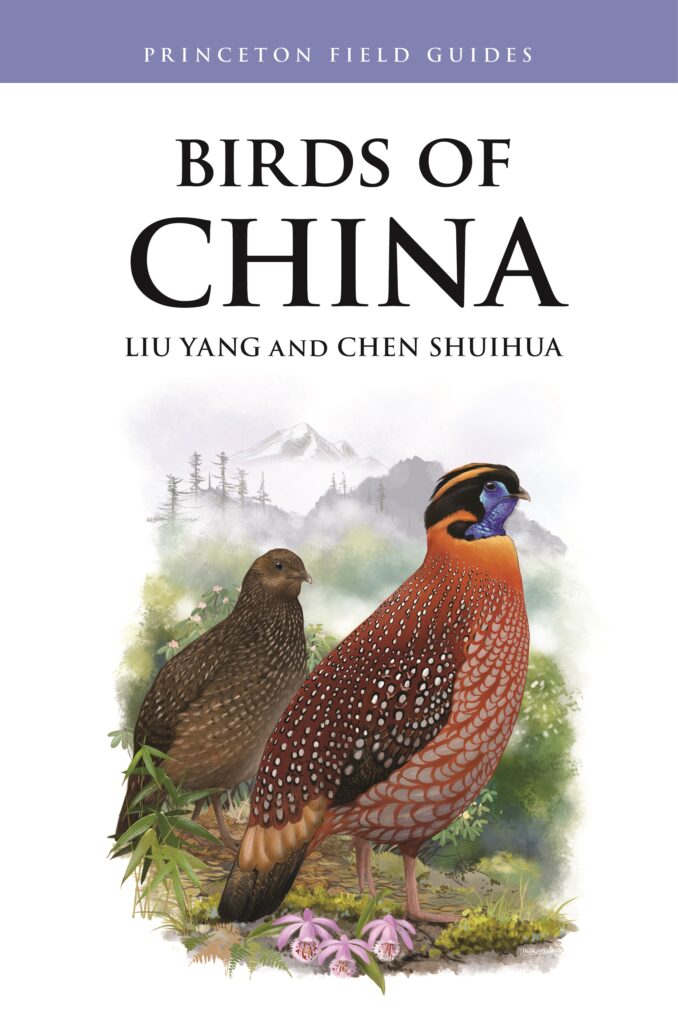https://press.princeton.edu/books/paperback/9780691237527/birds-of-china Liu Yang and Chen Shuihua. 2024. Princeton University Press, Princeton, NJ, USA. ISBN 9780691237527. Paperback ($39.95 USD).
I would like to commend Liu Yang and Chen Shuihua for their monumental work in cataloguing nearly 1,500 species in their Birds of China. It is inspiring to see an avifauna of any country described and illustrated by nationals of that country. Together, scholars Liu and Chen have created a valuable reference work to an enormous country with a fabulous avifauna. In just 670 pages they have included 14 pages of introductory materials, 24 of references and index, and the majority consisting of species accounts and distribution maps opposite illustrations. Twenty-one artists contributed work to this remarkable “field guide”. As one might expect therefore there is variation in illustration quality, though for the most part it is to the very high standard to be expected in an international guide published by Princeton University Press. Unfortunately, there is a marked shortage of illustrations of these avians in flight.
The book itself is well bound in a durable semi-hard cover sporting a superb illustration of a male Temminck’s Tragopan — the book’s most attractive feature. The book weighs in at 1,565 g, making it perhaps even heavier than the female of that species! Given the book’s size and weight, this is a book for the shelf, or perhaps the vehicle, but it is not suitable for carrying in the field. Given its weight, and given current international travel weight limits, it probably won’t be carried by visitors to the country, but will be referred to at home.
It is widely accepted that no sooner is a book published than it is out of date. As an author of bird books myself, I am painfully aware of the need to be as up-to-date as possible on submission for publication, knowing how quickly our knowledge of avian taxonomy and distribution continues to expand and grow. Nevertheless, each book is inevitably at least a year out of date by the time printing and distribution is possible. In the case of the very recently published Birds of China, this is actually an English-language translation of a book published in 2020, rendering it immediately, at best, four years out of date on publication.
Bearing in mind that this is a book in English for English readers, there are a number of anomalies that affect its usefulness. First, for the species descriptions, instead of placing the English name first, the scientific name takes precedence. This suggests that scientists, rather than birdwatchers, instigated this project, as many birdwatchers do not use scientific names. Second, next comes the species’ name in large Chinese script in the largest font of any text in the book, after which there follows what we must assume is a phonetic transliteration of the Chinese name complete with an array of macrons. I say assume, because unfortunately, the introductory pages (which have much blank space) offer no indication as to how these transliterated names should be pronounced in effect rendering them of no value to anyone who does not already know how to read Hanyu Pinyin. Third, and finally comes the English name. The small font size for this, combined with its weak coloration (inexplicably varyingly pale blue, pale green, or pale brown, and not bold), play in to the seemingly implicit stereotypical assumption in East Asia that English readers have exceptional eyesight! The species texts themselves are in an even smaller font that I found difficult to read even with my prescription reading glasses. I resorted therefore to using a page magnifier. The family introductory boxes are very useful, of a font size that is readable, though again Chinese comes before the English name, which is unusual in an English-language book.
The main text consists of five sections giving: measurements (lengths for all species, wingspans for some, weights for none), followed by sections on habitat, behaviour, distribution, and voice, and is partly, though not always usefully supported by short lines of text with lines pointing to parts of illustrations. This supplementary information frequently indicates the obvious, such as pointing out the clearly black legs of the illustrated non-breeding Cattle Egret, or uses “fewer than” or “redder than” without indicating with which species they are being compared.
The maps themselves are at the postage-stamp size typical of modern field guides; unfortunately, unlike those in the Chinese language A field guide to the Birds of China (1996) Wei-she Hui et al., the maps contain no internal borders of provinces or regions. The maps are supplemented by textual range descriptions, which use geographical names for provinces/regions within China. However, unless the reader is already very well-versed in Chinese geography, they will need to use an English-language gazetteer of Chinese place names to render the maps and descriptions of more than basic value. I looked immediately to the endpapers where I expected a large map of the country, but there are none there or within the introductory sections to help explain the textual use of regional distributions. This, for someone interested in avian distribution and migration, is a major omission.
The distribution maps raise an interesting point concerning the authors’ motivation. Take a strong hand lens to them and you will find that what at first appears like a smudged fingerprint in the bottom righthand corner is actually an inset of the whole of the South China Sea. This portion of the map is barely discernible to the naked eye, and so minute that it requires a strong hand lens in order to view it. At this scale it offers no additional understanding of avian distribution, which raises the question as to why it is there. Mysteriously the inset also includes four tiny untranslated Chinese characters that one can only assume are there for political, not ornithological, reasons, and which were missed during editing.
As a field guide this book is too heavy to carry in the field. As an illustrated checklist, to keep in the car or on a shelf, this is a very useful work offering illustrations of a mouthwateringly diverse avifauna. It is a fine reference tool as it stands, but one that I hope will quickly be improved in a future second edition.
Dr. Mark Brazil
Author, Birdwatching & Nature Guide, Japan Nature Guides
Header photo: Temmink’s Tragopan (Tragopan temminckii). Photo by Ondrej Prosicky via Getty Images.
Suggested citation:
Brazil, M. Review of the book Birds of China by Liu Yang and Chen Shuihua. Association of Field Ornithologists Book Review https://afonet.org/2024/04/birds-of-china-review/.
If you are interested in contributing a book review, or if there is a book you would like to see reviewed on our site, you can contact our Book Review Editor, Evan Jackson at evan.jackson@maine.edu

